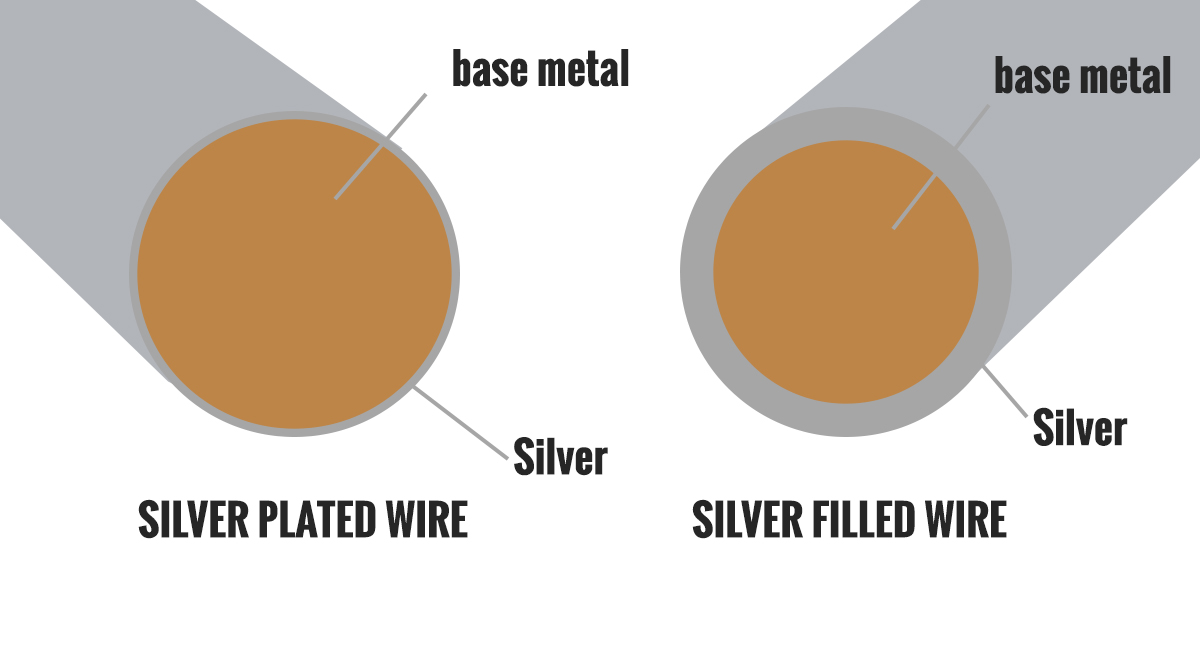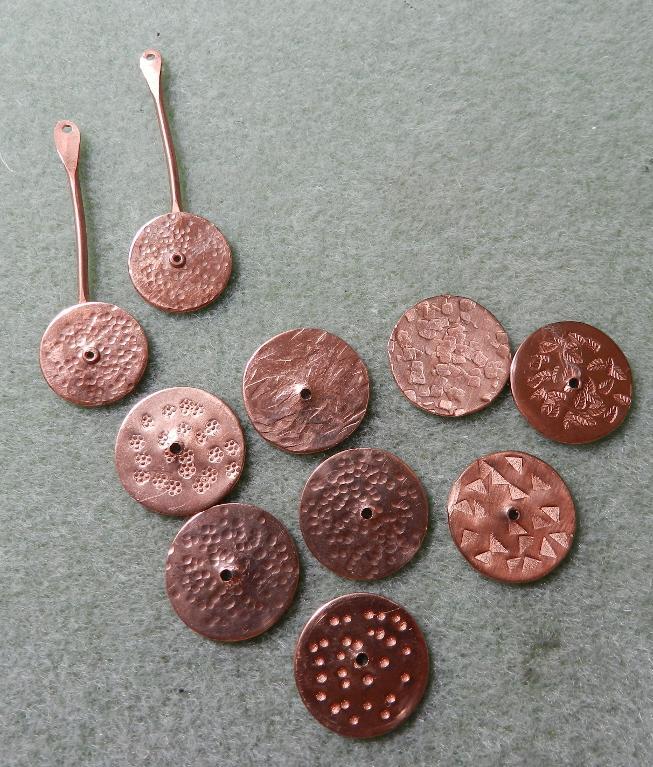As you venture into the art of metalsmith jewelry, you’ll inevitably have the desire to work with all kinds of metals. Whether you’re looking to work with silver, gold, rose gold, base metals or more specialized metals, this post will guide you through the essentials and pros and cons of the most common types of metal for jewelry making.

Photo via Craftsy member
Top types of metal for jewelry
1. Silver
For jewelry, silver is used in the form of sterling silver, which is 92.5 percent silver and 7.5 percent copper. Sterling silver is durable and long lasting, which explains why it is a popular metal for rings, necklaces, bracelets, cuff links, belt buckles, body jewelry and much more. However, silver jewelry is softer than gold, platinum and titanium, and it does require more care than some other precious metals because it tarnishes.

2. Silver filled
Silver filled metals (also called “silver overlay”) have been popular for years. Silver-filled wire is made by using heat and pressure to apply a layer of silver to a base of less costly metal.
This silver layer is hundreds of times thicker than a standard plating. The thickness of the sterling silver overlay on silver-filled wire constitutes a full tenth of its overall weight. This thicker silver layer lets you work deeper, polish more and even do light engraving without exposing the base metal underneath.
Silver filled components like ear wire and chains are affordable, long lasting and beautiful when paired with sterling silver pendants.
3. Gold
Gold jewelry is made up of an alloy of gold and other metals, such as silver, copper, nickel and zinc. The actual gold content of metal is measured in Karats (K) or carats (ct), which describes the proportion of pure gold to the other metals in the material. The higher the proportion of gold in the final metal, the more expensive it will be.
The maximum gold content is 24K, but because 24K gold is soft and malleable, it cannot be used for jewelry. By comparison, 14K gold has 14 out of 24 part of pure gold, and the rest is some other metal. This makes it stronger and easier to work with. An 18K gold is 75 percent pure gold, and the balance is made up of different metals that give the final metal its unique appearance and color.
Pure gold is yellow in color. The non-gold metals used in the alloy determine the ultimate color of gold. The metal added to make the alloy gives it a different hue:
- Yellow gold is the alloy of pure gold, silver and copper or zinc. The metals are mixed in a predetermined proportion.
- White gold is the alloy of pure gold and white metals, such as nickel, silver and palladium. It is actually grayish in color and is plated with rhodium to give it a whiter look. Today, nickel is not preferred, as many people are allergic to it.
- Rose gold is the alloy of pure gold and a great proportion of copper. The reddish hue is due to the increased of copper in the alloy.
- Green gold results from leaving copper out of the alloy and just having pure gold and silver. For example, 18K gold would have 75 percent pure gold and 25 percent silver.
Gold in any of its colors makes beautiful wedding bands, rings, earrings and necklaces.

Photo via Craftsy member
4. Base metal
Base metals include iron, nickel, copper and titanium, among others. These metals are relatively abundant and tend to oxidize or corrode relatively easily. Noble metals, on the other hand, are rare and resistant to corrosion. Base metals like copper and brass make beautiful hammered disc pendants.
5. Platinum
Platinum is the rarest and most expensive of the metals. It is incredibly durable and does not tarnish: Pure platinum melts at 3216.2 degrees Fahrenheit, which is perhaps why it’s so popular for wedding bands, men’s rings and cuffs and other high-end jewelry pieces.
To enhance its characteristics and durability, platinum is alloyed with copper and cobalt along with “platinum group” metals: Ruthenium, rhodium, palladium, osmium, iridium, and platinum together make up the platinum group of metals.
6. Titanium
Titanium is the hardest natural metal known to man: It is stronger than gold, silver and platinum and even three times as strong as steel. Its strength, scratch resistance and light weight lends itself well to jewelry making. Plus, titanium is easy to color.
Titanium is completely hypoallergenic. In fact, titanium is the most hypoallergenic material known to man, and it is rapidly replacing body-piercing jewelry and other surgical implants and instruments since the body does not react to it.
However, if you are planning on buying a titanium ring, I highly advise you not to! Why, you ask? Your fingers will change size over time, and titanium is not solderable or resizable.
Become a More Confident Metalsmith
Learn must-have shop secrets for metalsmithing in this online class. Get to know common metals and tools, and learn to give metal shape, texture and stylish finishes. Enroll Now »

Share tips, start a discussion or ask one of our experts or other students a question.
Already a member? Sign in
No Responses to “6 Top Types of Metal for Jewelry”